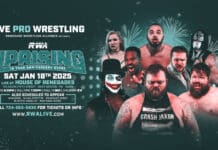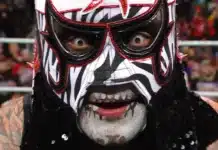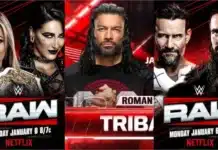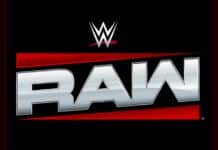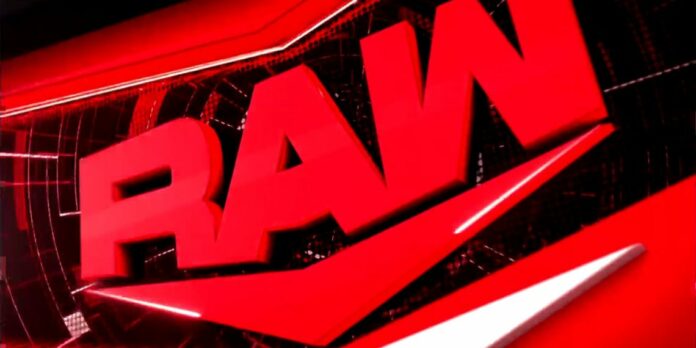
Some discussion was generated online with the news that starting next week for Raw, the broadcast will officially go back to a TV-14 rating after several years of the PG era that saw some aspects of the industry, including blood, eliminated from the program. Of course, the jaded social media crowd might expect this to be the return to “the glory days” of the Attitude era, a time period where the business surged in popularity based on the competition of Monday night programming.
However, will Raw actually be any different with a TV-14 rating?
First, it should be noted why the product went PG originally and that will more or less explain why it makes sense to shift the product in a slightly edgier direction now. The PG process was at least two-fold, if not more layered than that. As we know, Linda McMahon, who donated six million dollars to the Trump campaign to buy a spot in his cabinet as the head of the Small Business Administration, unsuccessfully ran for senate in both 2010 and 2012. But, Linda’s political aspirations began before that, as she was on the Connecticut Board of Education in 2009 before she left that position to pursue the senate. It goes without say that softening the WWE’s image with the switch to the PG era in mid-2008 was a benefit to Linda’s campaign, as it gave her opponents less material to use against her if the WWE product was more family friendly by the time voters went to the polls. As mentioned, Linda was a part of Trump’s cabinet for a few years, and worked in politics as recent as the 2020 presidential election when she raised money for a Trump Super-Pac.
Politics are even shadier than pro wrestling.
So, the company had its former CEO in mind when it took the product in a PG direction, but it wasn’t just for Linda’s potential political career. As we know, the Ultimate Fighting Championship, a fledgling organization before Lorenzo and Frank Fertitta rescued it from the brink of collapse, surged in popularity in the mid-2000s from the success of the Ultimate Fighter reality show, and by the time that the WWE went PG, Zuffa was taking a noticeable piece of the pay-per-view pie that Vince McMahon had monopolized since WCW folded. Obviously, the UFC was a combat sports product that catered to the same demographic that tuned in for record-setting ratings during the Attitude era. Instead of trying to directly compete with the trend at the time, the McMahon empire shifted toward a younger demographic that wasn’t associated too often with mixed martial arts.
John Cena was the perfect representation and character for the PG era. In many ways, Cena was the real-life good guy off-screen that Hulk Hogan pretended to be for years on-screen. It’s no coincidence that the majority of Cena’s big run was during the PG era because he was the classic baby face that the younger generation could cheer. Some might cite that a portion of the audience would boo him out of the building on a regular basis, which is true, he certainly had detractors among older fans, but the bottom line is, John Cena is a legitimate, money-drawing star. It doesn’t matter if the fans paid to cheer him or paid to boo him, the point is, they always paid to see him.
However, John Cena, aside from his recent Raw appearance to celebrate twenty years in the company, has taken a role as a part-time wrestler between movie roles, and you can’t blame him, considering there’s more money in Hollywood without the risk of pro wrestling on a full-time basis.
So, this does open the door for a change of pace with the product, especially since the representative of the PG era isn’t a full-time wrestler now, but that doesn’t mean that next Monday will be the return of the Attitude era either.
For whatever reason, some fans view the wrestling war of the late-90s with rose-colored glasses. Don’t get me wrong, it was an amazing time to be a fan and undoubtedly the biggest boom period in the history of the industry. Every Monday night was “must see” programming and you really never knew what was going to happen, especially because internet rumors were only read by a portion of the viewing audience so you saw an organic reaction from the crowds on television. That being said, much like the “Rock N’ Wrestling Connection” of the 80s, the Attitude era was a product of its time and place. At the time, society was moving in an edgier direction, and sports entertainment responded to that, which is why wrestling had a spot in pop culture. Marylin Manson sold almost five million albums, Howard Stern had twenty million daily listeners, and Jerry Springer had pay-per-view specials.
If you actually watch some of those retro shows now, there’s a chance that on any given show, at least 30% of the content is just lame segments that won’t hold up today. For every Stone Cold segment that became etched into history as a signature moment in video packages, there’s a Beaver Cleavage or Mae Young with the hand segment that everyone wants to forget actually happened. Part of the reason the dreck was overlooked at the time was because the industry was so popular that fans were willing to overlook the muck to get to watch Austin, The Rock, and Mankind on the same show.
If the vast majority of those segments were booked today, it would flop, even the successful stuff in the 90s because it has already been done. By nature, the content that got over more than twenty years ago would by antiquated in the modern era. Kevin Owens driving a maple syrup truck to the ring would just be a retread of an angle when the sport was more popular. Plus, the “crash TV” style of the Attitude era by nature doesn’t have any longevity, which is why WCW went from the hottest wrestling company in the world to out of business in the span of roughly three years.
No, the TV-14 rating isn’t the return in the Attitude era and probably not a drastic change for the product either. In fact, the structure of the program arguably hinders more of the progress of the show with the 50/50 booking than the nature of the content itself. The ability to use more profanity or some blood in itself doesn’t do anything to help make new stars. If that environment can help maximize someone’s potential might be the biggest takeaway from the new rating. The use of blood, at least intentionally, hasn’t been seen in years in the WWE so if Kevin Owens makes a top baby face bleed then the segment can stand out. There’s a reason everyone remembers that Brock Lesnar vs. Randy Orton match. Speaking of Owens, he’s the guy that I really think could benefit from lighter restrictions of the product. He’s a top guy that often doesn’t get booked like a main event star, but the ability is there. Again, there’s a reason he was Steve Austin’s opponent at Wrestlemania. The TV-14 rating doesn’t change the landscape of the company, but it definitely gives more flexibility to the product.
What do you think? Share your thoughts, opinions, feedback, and anything else that was raised on Twitter @PWMania and Facebook.com/PWMania.
Until next week
-Jim LaMotta
E mail [email protected] | You can follow me on Twitter @jimlamotta

